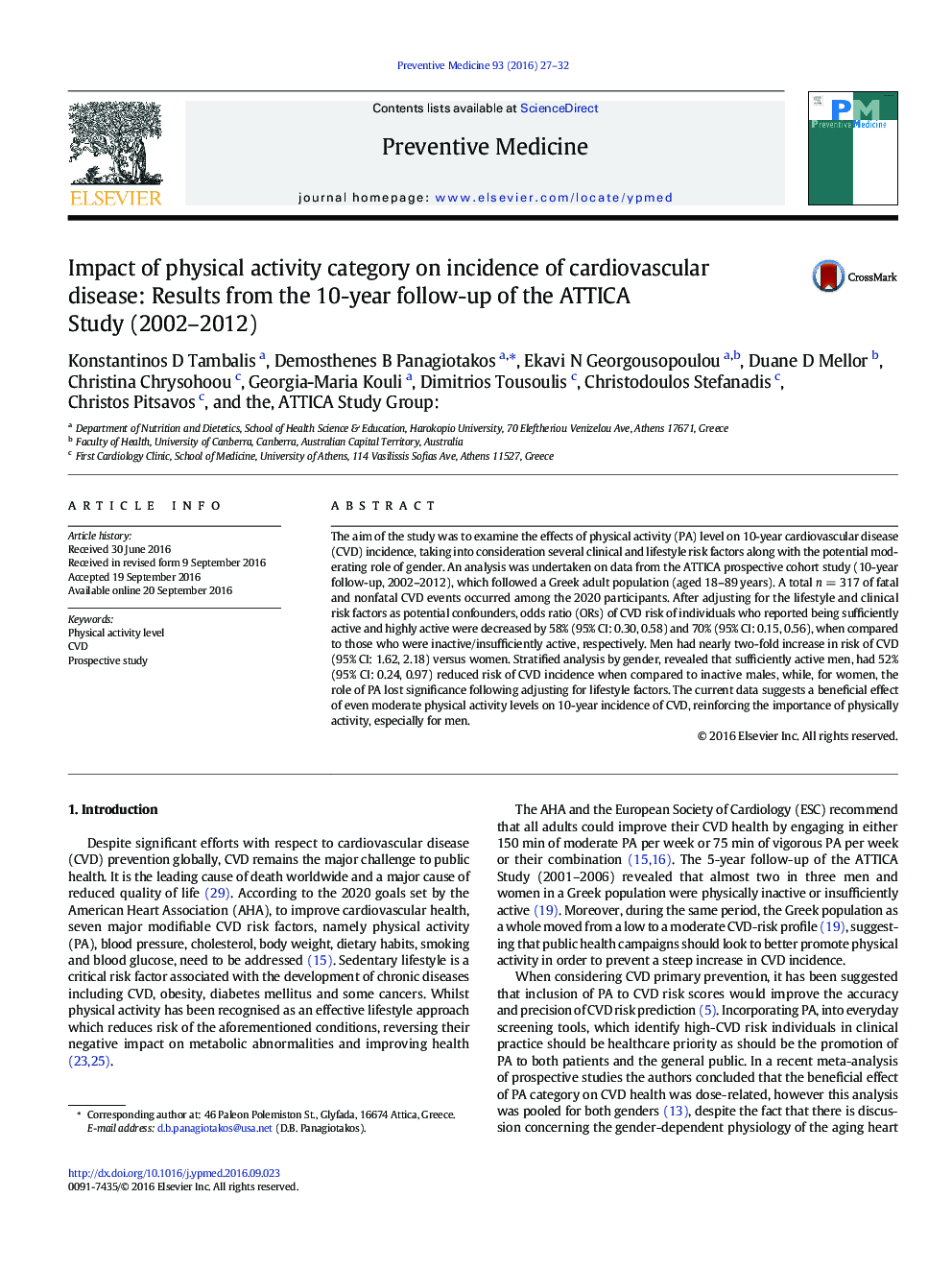| Article ID | Journal | Published Year | Pages | File Type |
|---|---|---|---|---|
| 8693825 | Preventive Medicine | 2016 | 6 Pages |
Abstract
The aim of the study was to examine the effects of physical activity (PA) level on 10-year cardiovascular disease (CVD) incidence, taking into consideration several clinical and lifestyle risk factors along with the potential moderating role of gender. An analysis was undertaken on data from the ATTICA prospective cohort study (10-year follow-up, 2002-2012), which followed a Greek adult population (aged 18-89 years). A total n = 317 of fatal and nonfatal CVD events occurred among the 2020 participants. After adjusting for the lifestyle and clinical risk factors as potential confounders, odds ratio (ORs) of CVD risk of individuals who reported being sufficiently active and highly active were decreased by 58% (95% CI: 0.30, 0.58) and 70% (95% CI: 0.15, 0.56), when compared to those who were inactive/insufficiently active, respectively. Men had nearly two-fold increase in risk of CVD (95% CI: 1.62, 2.18) versus women. Stratified analysis by gender, revealed that sufficiently active men, had 52% (95% CI: 0.24, 0.97) reduced risk of CVD incidence when compared to inactive males, while, for women, the role of PA lost significance following adjusting for lifestyle factors. The current data suggests a beneficial effect of even moderate physical activity levels on 10-year incidence of CVD, reinforcing the importance of physically activity, especially for men.
Related Topics
Health Sciences
Medicine and Dentistry
Complementary and Alternative Medicine
Authors
Konstantinos D Tambalis, Demosthenes B Panagiotakos, Ekavi N Georgousopoulou, Duane D Mellor, Christina Chrysohoou, Georgia-Maria Kouli, Dimitrios Tousoulis, Christodoulos Stefanadis, Christos Pitsavos, ATTICA Study Group ATTICA Study Group,
